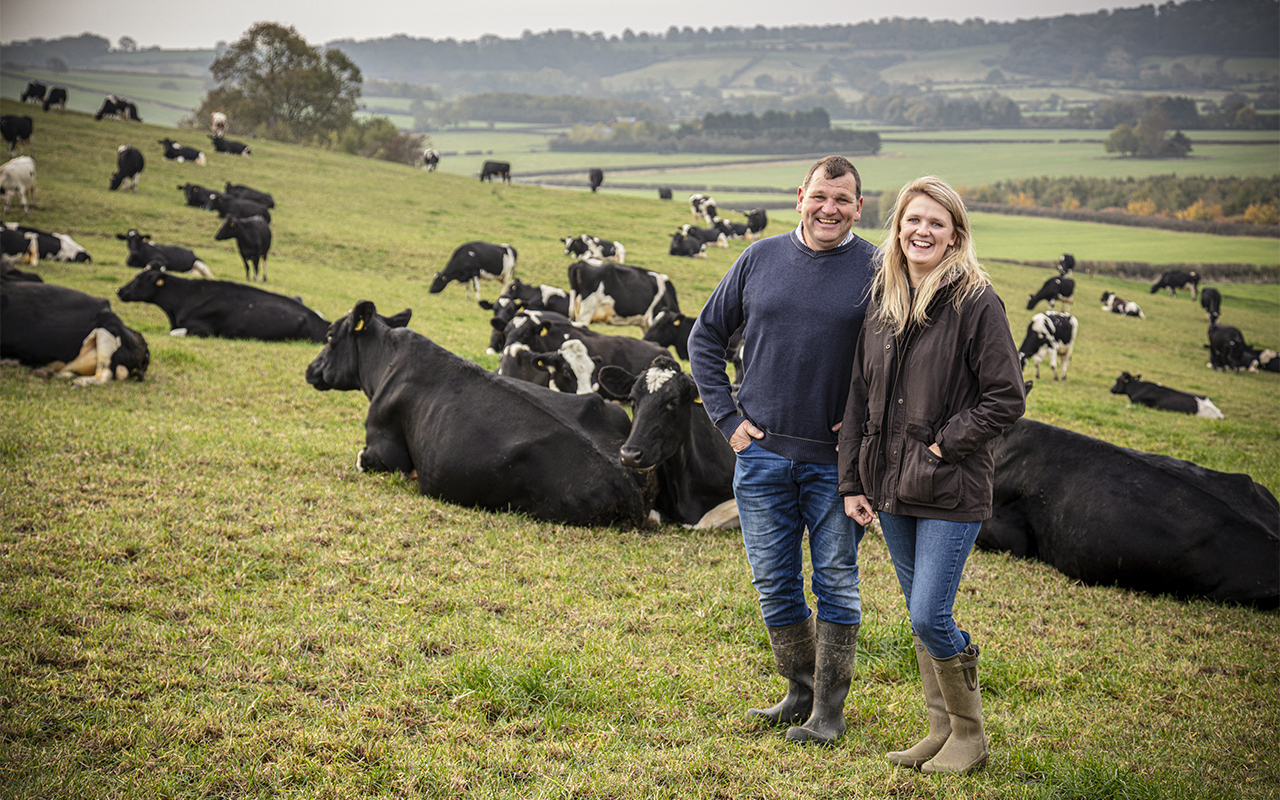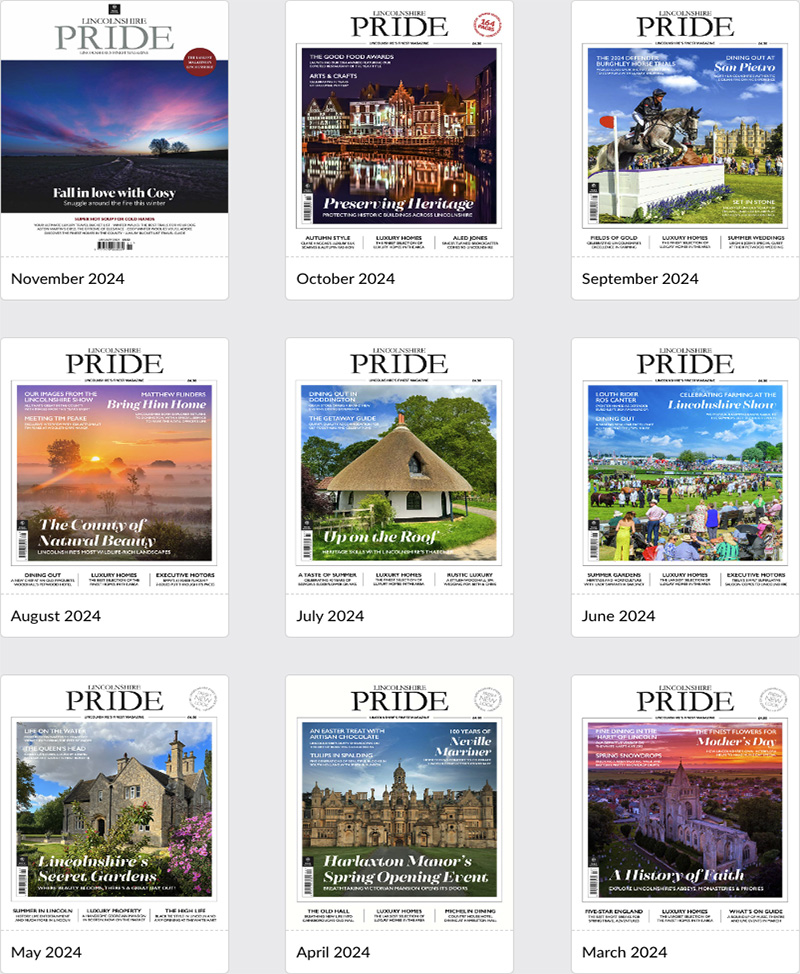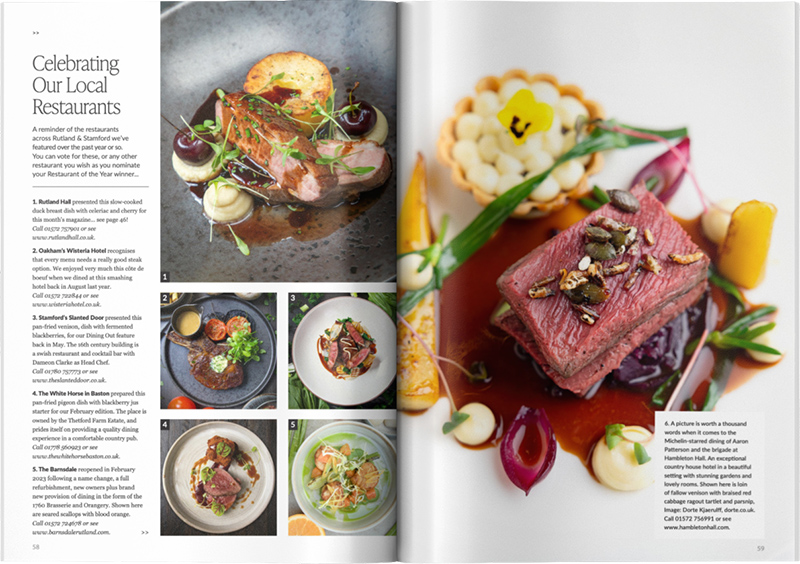
Rutland Food History: Stilton Cheese
This month Uppingham will welcome around 200 classic cars into the Market Place, as the annual Stilton Cheese Classic Vehicle Run takes place. An ideal opportunity, we thought, to find out a little more about one of Britain’s most hallowed products. Beloved by those who enjoy rounding off their meal with cheese, biscuits, and that all-important glass of port
It’s always good to have friends in high places, and when it comes to Stilton, it doesn’t get much higher than Kim Kettle. He’s approaching 50 years in the industry and has served several times as the Stilton Cheesemakers’ Association’s chairman, as well as working for the product’s most prolific producer – Long Clawson Dairy – in a number of roles, the most recent of which is in his current job as Farm Liaison & Sustainability Director.
Ask anyone to name a British cheese and Cheddar is the most likely go-to variety, but Stilton will run a close second for most people. However, the difference in the way each of those is produced and the quantity they’re produce in is chalk and… well, cheese.
Britain produces nearly 512,000 metric tonnes of cheese each year, and there are 700 to 800 named British cheese varieties, produced by over 500 cheesemakers. As an aside France, surprisingly, only has 400 varieties. The US has 600 (but they’re mostly terrible). Italy has 2,500 and around the world there are thought to be around 4,800. Cheddar cheese accounts for 70% of the UK’s total cheese consumption which equals to 358,400 tonnes.
Stilton, meanwhile, is produced in more modest quantities, of 7,500 tonnes or 950,000 whole 8kg cheeses are made each year, and yet its status is revered, with port and Stilton a ritual after a formal dinner and with Stilton a common feature on any self-respecting host’s cheese board. The contrast between Cheddar and Stilton is marked in the volume in which it’s produced, but also in terms of the protection that the latter is afforded.
“Stilton doesn’t have a definitive ‘inventor’ or an original dairy,” says Kim. “Two of the earliest references to Stilton cheese were made in the 1720s, by William Stukeley and Daniel Dafoe, with a definitive recipe published by Richard Bradley, the first Professor of Botany at Cambridge University, in 1726.”
Stukeley described Stilton as being ‘the English Parmesan’ and as the Great North Road was a coaching inn thoroughfare on the journey from London to Edinburgh, travellers were soon stopping in the village to consume Stilton, not least at The Bell Inn. The landlord at the inn, Cooper Thornhill, was enterprising enough to recognise its commercial popularity and partnered with cheesemaker Frances Pawlett to capitalise on its potential.
Shuckburgh Ashby’s housekeeper at Quenby Hall was also a talented and prolific domestic producer of Stilton. When The Bell Inn changed ownership, its new custodian – who also happened to be married to the aforementioned housekeeper’s daughter – was keen to continue providing their customers with the cheese and so the publican would regularly send a horse-drawn carriage to Quenby for fresh supplies.
That same route of 39 miles, which soon saw deliveries to other customers on the way, endures today as the route of the Stilton Cheese Classic Vehicle Run re-established by Jim & Joy Barry in 2007, with Uppingham right in the middle.
Happily, Stilton has avoided the same fate as many of the UK’s foods by successfully seeking Europe-wide Protective Designation of Origin (PDO) status in 1996; alongside its CTM Certification trademark which came first in 1961. The protection ensures that Stilton Cheese must be produced, processed and prepared in a specific area, using a particular method.
Granted to 32 UK products, it’s a stronger protection of a product than the similar Protected Geographical Indication (PGI) status which merely states that production, processing or preparation of the UK’s 51 such products must take place in a particular region, and which doesn’t specify the method of production.
Whilst France and Italy have 758 and 882 protected status products, Britain has just 94 such products and many more that should, but don’t, enjoy such protections often giving rise to cheap imitations like the ‘Lincolnshire’ sausage prepared to any old recipe, with no connection to its eponymous county.
Stilton cheese, is only produced by five dairies, Colston Bassett; Cropwell Bishop; Hartington; Long Clawson and Shirevale. A sixth dairy, Tuxford & Tebbutt, ceased production last year, despite having a history that dated right back to 1780.
The protected characteristics of Stilton are meeting the requirement of its minimum 48% milk fat in dry matter, cylindrical shape, blue veining, its unpressed nature and its production using locally produced and pasteurised milk from Derbyshire, Leicestershire or Nottinghamshire.
All the Stilton producers are proud of artisanal craft, whilst Long Clawson is responsible for the majority of the Stilton produced, it still very much follows all the craft and artisanal heritage handed down from their forebears. Clawson consumes 70 million litres of milk annually, to produce 500,000 whole cheeses, each weighing about 8kg, 25cm tall and 20cm round.
Of that total output, around 85% is consumed within the UK, 15% is exported worldwide. 10% of the Stilton produced is made as white-Stilton, you will often find this combined with other ingredients, for instance, cranberry or apricot.
It’s probably a good thing that the product enjoys its protected status, because if ever a product were crying out for some efficiencies and corner-cutting, it’s Stilton.
“To make any cheese, the goal is to preserve solids, by removing the liquid in the form of cheese whey,” says Kim. “In the case of Cheddar, it takes approximately three hours for the coagulation process which separates the curds and whey. In the case of Stilton, the process takes longer – about 19 hours.”
“A coagulant is added to the milk along with penicillium roqueforti to ensure the cheese develops veins, taking 90 minutes for the milk to set into a gel, which can then be cut into 1cm cubes, allowing the curds to sink to the bottom of cheese vat and the liquid whey to be drawn off.”
The curds are initially left to drain overnight in the cheese vat, after which the curd is milled and mixed with salt and filled into cheese hoops. they continue to drain in the hoops for several days in temperature and humidity-controlled rooms.
“From the original volume produced, cheesemakers remain with 13% solids to make the cheese and the remaining 87% of the volume in the form of whey is drained from the curds within 24 hours.”
“Almost 20,000 litres of milk will result in the cheesemaker having two tonnes of curds to mill, mix with salt and put into cylindrical moulds, known as hoops. It’s allowed to settle into these hoops, rather than being pressed by force. Again, whilst Cheddar is compressed and ready to mature in less than a day, Stilton will remain in its hoop for five days.”
When it’s removed, the surface is smoothed with a palette knife (known as rubbing up) and allowed to air dry, ensuring its natural biome to mature the cheese.
Each whole cheese is turned daily and after about four weeks, each is perforated with 200 stainless steel needles. The idea is to help the cheese ripen by means of respiration – breathing out CO2 and breathing in oxygen – which ensures the creation of the blue veins characteristic of Stilton. After six weeks or so, the cheesemakers use a cheese iron to assess its maturation.
Younger Stilton is a little more acidic and typically ready after eight or nine weeks, whilst a softer, more rounder cheese is achieved after 12 or 13 weeks. Preference in flavour and texture is subjective and so too is the duration for which Stilton should be matured. The skill of the cheesemaker is still very much in play here which is another reason that Stilton has escaped the less-skilled, more regimented production of, say, Cheddar.
To some degree that means the continued quality of Stilton is dependent on finding the future generation of cheesemakers and farmers too. Long Clawson Dairy is a cooperative owned by 33 farmers whose collective milk output from their Fresian, Holstein Cross and Montbéliarde cattle is almost exclusively supplied to the dairy.
Happily, Paul Eggleston, a fourth-generation farmer near Long Clawson has seen his daughter Amy join the business, Paul who is also Chairman of the dairy has become a grandfather, so that’s a potential sixth generation farmer too. Kim and the rest of the farmers and cheesemakers are keen to see a younger generation gain a taste for Stilton, and to correct the myth that Stilton is just a Christmas treat.
“Stilton is still associated with Christmas, approximately where 30% of our total output is enjoyed over the festive season,” says Kim. “However this is changing, where chefs are using it as a pizza topping or melted onto burgers in restaurants. Not only are individuals enjoying the product all year round, the product has also taken interest of the younger generation.”
“It’s a versatile cheese with a unique umami taste, and with provenance as well as a heritage that really deserves to be celebrated. We’re glad that Stilton enjoys its protected status, and that its production still necessitates the skill of the cheesemaker, ensuring its authenticity. Hopefully those are characteristics which will secure its place in the hearts of the British consumer for many generations to come!”
Stilton Cheese is available from good independent cheese retailers, and from Long Clawson’s own farm shop. See www.stiltoncheese.co.uk for details.
To see more images from our feature, see the April edition of Rutland Pride at https://www.pridemagazines.co.uk/rutland/view-magazines?magazine=April-2025






